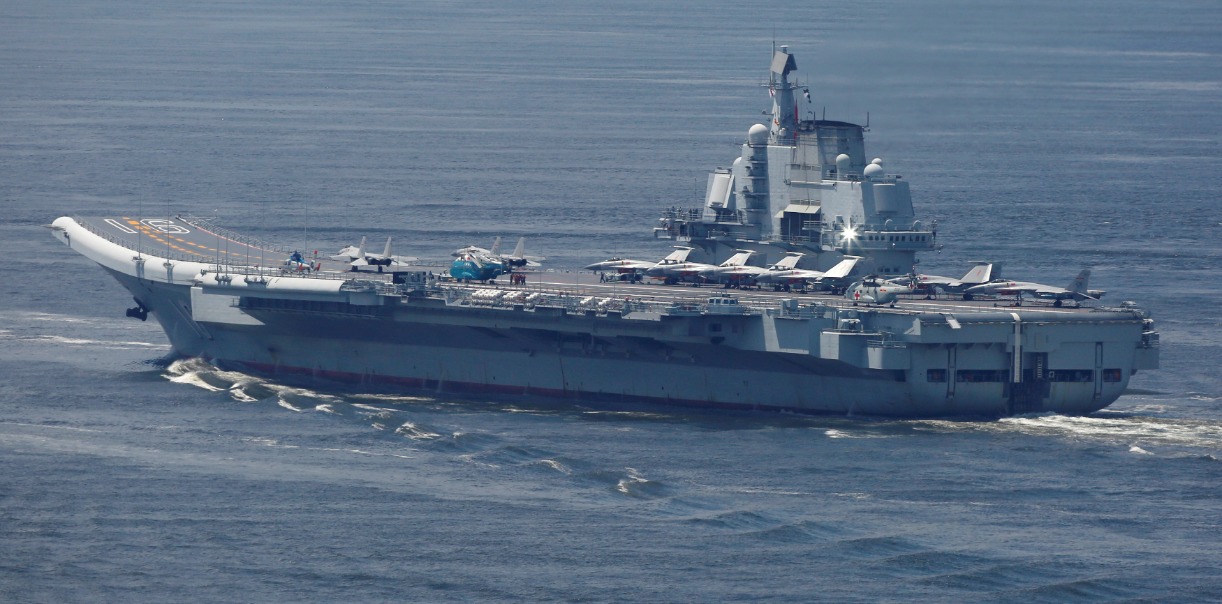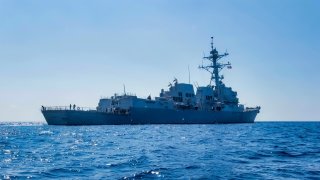The U.S. Navy Has a South China Sea Problem
The U.S. Navy's potential involvement in escorting Philippine resupply ships in the South China Sea is a flawed idea, given the Navy's current strained capacity and ongoing commitments in multiple global theaters. With much of the fleet tied up in maintenance or deployed to the Middle East, the Navy is ill-equipped to sustain operations in the Indo-Pacific.
Summary and Key Points: The U.S. Navy's potential involvement in escorting Philippine resupply ships in the South China Sea is a flawed idea, given the Navy's current strained capacity and ongoing commitments in multiple global theaters. With much of the fleet tied up in maintenance or deployed to the Middle East, the Navy is ill-equipped to sustain operations in the Indo-Pacific.
-This situation exposes the diminishing U.S. naval presence in Asia and emboldens China to assert control over the South China Sea.
-As the U.S. military's ability to project power globally wanes, the strategic risks of overextending resources become increasingly apparent, especially in a region as critical as the Indo-Pacific.
A Laughably Bad Idea: US Navy Warships Escorting Philippine Resupply Ships in South China Sea
The U.S. Navy is struggling immensely to meet its strategic requirements, even at a time of relative peace. As the world inches nearer to conflict, the Navy will be unable to sustain its operations, especially in the likely event that conflict stretches to multiple theaters.
Reality is a Pain
Reality is forcing a strained, distracted U.S. military to choose. None of America’s leaders want to prioritize American strategic commitments. To them, it’s all about puffing themselves up for the cameras and looking to see who’s the greatest hawk of them all. This mentality, while endemic of the post-Cold War era, is also coming to an end, whether Washington likes it or not.
There are real challengers to the United States, and they won’t back down to a simple show of force. These rivals question whether the Americans have the capacity to actually fight.
Today, the Navy is being made to choose which theater of operation it values more: the Middle East, where it has been mired in a seemingly endless array of inconclusive conflicts, or the Indo-Pacific.
Mind you, most of America’s top ten trading partners are found in Asia. The bulk of the world’s goods come from and go to Asia. To say that Asia is the most important region of the world outside of our own is an understatement.
Right now, however, there are no carriers deployed to the Indo-Pacific. What few are operational have been sent over to reinforce America’s broken deterrence in the Middle East.
The rest of the fleet, according to reports, is in port for routine maintenance and repair. Of course, America’s ailing shipyards are so sclerotic that there are multiple backlogs not only with routine maintenance of America’s complex carriers, but with our vital submarines and other key warships.
China Turns Crisis Into Opportunity in South China Sea
The Chinese, sensing opportunity in the current global crisis, have ramped up hostilities against their neighbors. Specifically, China is hammering the Philippines as Beijing vies to dominate the South China Sea.
Should China be allowed to control the South China Sea, it will have a chokehold on one of the world’s most vital maritime transit points. Beijing will have gained access to oil and natural gas deposits beneath the sediment in the South China Sea that technically belongs to the Philippines, and Beijing will have secured the southern maritime passes into Taiwan – China’s great prize.
America can no longer be in two places at once. It lacks the force posture. Its politicians have failed to realize this. But China’s strategists have figured it out.
This is why they’re not at all concerned about the tut-tutting of Biden administration apparatchiks urging Beijing’s rulers to respect the international commons and international law. For Beijing, the next several months present the greatest strategic opportunity they’ve had in decades to fundamentally redraw the regional map.

That’s why all the loose talk coming from Filipino and American naval strategists about having the U.S. Navy “consider escorting Philippine ships delivering food and other supplies to Filipino forces in the South China Sea” is a hilariously awful idea. The Navy might be able to do this once the crisis in the Middle East abates, but right now, even bringing this up as a possibility only signals to China just how impotent the U.S. Navy is.
The Navy Won’t Be in the South China Sea Much Longer
What’s more, China’s threat to the Philippine position in the South China Sea is existential, whereas the U.S. Navy’s role there is obviously ephemeral.
Until Washington’s leaders wake up to the fact that it isn’t 1996 anymore, and America can only be in one theater of operations at a time, the risk of losing a wider regional war increases.
Author Experience and Expertise: Brandon J. Weichert
Brandon J. Weichert, a National Interest national security analyst, is a former Congressional staffer and geopolitical analyst who is a contributor at The Washington Times, the Asia Times, and The-Pipeline. He is the author of Winning Space: How America Remains a Superpower, Biohacked: China’s Race to Control Life, and The Shadow War: Iran’s Quest for Supremacy. His next book, A Disaster of Our Own Making: How the West Lost Ukraine, is due October 22 from Encounter Books. Weichert can be followed via Twitter @WeTheBrandon.
All images on page Shutterstock.
From the Vault
Russia Freaked Out: Why the U.S. Navy 'Unretired' the Iowa-Class Battleships
Battleship vs. Battlecruiser: Iowa-Class vs. Russia's Kirov-Class (Who Wins?)


